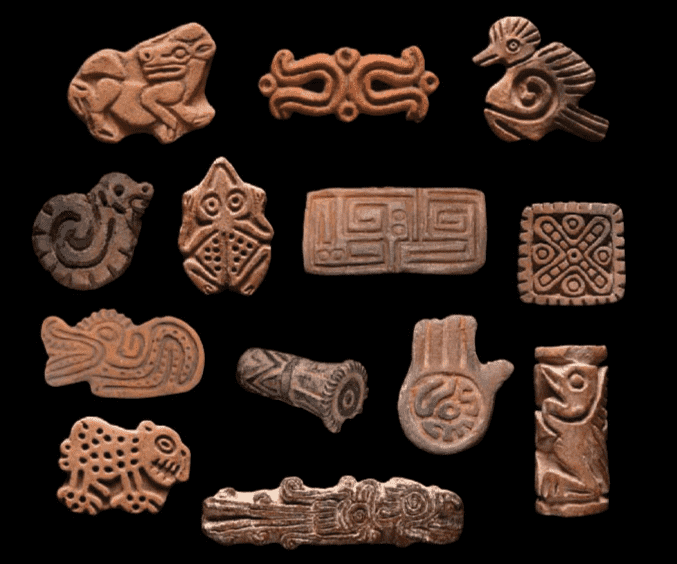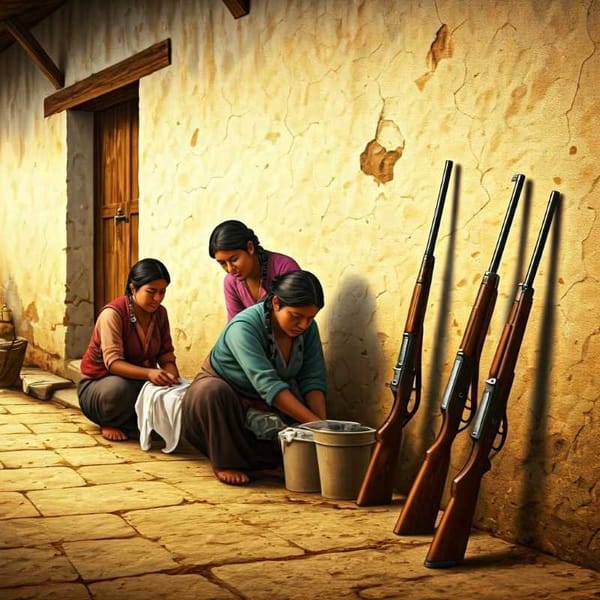The Artistic Expression of Pre-Columbian Seals
Several pre-Hispanic civilizations across the continent made use of seals. As we can see, the aesthetic concept behind the designs varied greatly throughout the cultures that used them.

Seals are artifacts made of stone, wood, or baked clay that were used in pre-Columbian America to stamp or print various images. These stamps, or pintaderas as they were also known, had a wide range of images, and the variety of designs and overall beauty they possessed were impressive. They, like any artistic manifestation, are a cultural and psychological expression of the people who created and used them.
Seals were employed by several pre-Hispanic cultures throughout the continent, from the south (in what is now Peru, Colombia, and Brazil) to the north (in some states of the United States). However, the majority of them have been discovered in Mesoamerica. They were abundant in Mexico's Central High Plateau, Guerrero, the Gulf and Pacific sides, the Tehuantepec Isthmus, and the Yucatan Peninsula. As we can see, the cultures who employed them were diverse, as is the aesthetic notion of the designs.
The majority of those that have survived are constructed of baked clay, however, some are sculpted in stone, bone, or wood. The latter is the most degraded, and the drawing is already difficult to discern. The earliest seals were directly sculpted and hence had unique designs; however, high demand eventually caused molds to hasten production, allowing the production of multiple seals of a single pattern.
These seals came in a variety of shapes, depending on their intended usage. There are flat, concave, and convex shapes, as well as cylinders. Flat or curved stamps frequently have a handle or grip on the opposite side of the design. Some cylindrical ones include a perforation that runs from side to side through which an axis was put to allow free rotation, allowing for the printing of long fretwork. At times, the cylindrical pints merely had depressions on the sides, allowing them to be spun with the fingers.
But what were these seals used for? Often for ornamentation, but also as a distinctive element or for identification. They were printed on pottery objects or cloth, paper, and even on skin. In the case of pottery, the stamp was pressed into the fresh clay, leaving a bas-relief impression.

To stamp the stamp designs on other materials, these were smeared or painted with various pigments. The Mesoamerican peoples knew a large number of colors, generally, vegetables and minerals, such as ocote smoke (ocotl), black earth (tlayacatl), and olote charcoal to obtain blacks of different intensities; or white earth or tizate (tizatlali) and gypsum (chimaltizatl) for white. Among the red dyes, they used the colored achiote (achiotl), cochineal (nochistli) -the only one of animal origin- and the sap of the blood tree (escuahitl); the most common yellows were provided by the yellow earth (tecozahutli), the sap of the chicalote, the thorn poppy and the zacatlascal -a parasite of certain trees of warm climate. Blue was obtained from indigo and turquoise from the mixture of indigo with alum and a bit of white.
Paints were made by grinding the pigments and mixing them with chia or chicalote oil, or with the glutinous juice of the tzauhtli. This agglutinating gum was obtained from the leaves of an orchid (Bletia autumnalis). As we can see, they could obtain a very large number of colors -a wide palette as they say in artistic terms- which, applied on the seals and stamping them on different materials, left beautiful multicolored prints.
The pre-Columbian chromatic ideal can be seen in those that have survived, with the absence of halftones and the presence of well-contrasting primary colors. They didn't employ any fading tones or shadows. The coloring is rich, even though the use of colors was inspired by symbolism, which is frequently exposed to the painters' fancy.
Seals of various sizes have been discovered. The smallest are flat and have around one centimeter of side; the largest, located in Tlatilco, is tubular and measures about 23 cm wide.
Geometric designs prevail in the oldest seals, although copies of natural forms - plants, animals, and even human beings - may be observed in later ones, which are usually paired with geometric motifs. Designs that reflect symbolic ornamentation, and imagination, often tied to religious rites, can be appreciated in the seals of the most sophisticated societies. Even in the most ornate seals from the most evolved societies, the lack of perspective control can be observed, giving the designs a sense of unreality and, as a result, a naive character.
The composition's clarity, the fluidity of movement representation, and the naturalness of the designs, in which natural elements have been stylized to their most crucial qualities, are also noteworthy. Nature's forms can be seen being simplified until they become common signs. Despite the seeming simplicity of their technique, they have a strong expressive force, and both the stylized characters borrowed from nature and the geometric designs have a distinct beauty that is still an example of composition and stroke today.
By Rosa Elena González, Source: Correo del Maestro. No. 41, pp 46-47.




